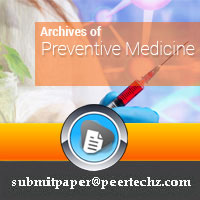Archives of Preventive Medicine
The pandemic of 2019 novel coronavirus infection and Hajj 2021
Behroz Mahdavi Poor1, Jalil Rashedi1*, Nazila Gheitarani2 and Mohammad Asgharzadeh3
2Department of Population and Family Health, Vice Chancellor for Health, Tabriz University of Medical Sciences, Tabriz, Iran
3Biotechnology Research Center, Tabriz University of Medical Sciences, Tabriz, Iran
Cite this as
Poor BM, Rashedi J, Gheitarani N, Asgharzadeh M (2020) The pandemic of 2019 novel coronavirus infection and Hajj 2021. Arch Prev Med 5(1): 070-071. DOI: 10.17352/apm.000024Dear Editor-in-Chief
In December 2019, an outbreak of severe pneumonia of anonymous etiology was reported from Wuhan city, China. The Chinese health authorities rapidly determined the causative agent of the disease as a novel coronavirus (2019-nCoV) [1]. Coronavirus Disease 2019 (COVID-19) quickly widespread and becomes a major public health concern throughout the world. Growing evidences, including transmission of the infection among family members and infection of the hospital workers revealed the ability of the emerging virus to transmit continuously from human-to-human [1,2]. Common findings in symptomatic cases are fever, dry cough, dyspnoea, and view of bilateral regions of ground-glass opacities on chest CT scans with a mortality rate of approximately 2%. [3,4]. Until now, no approved therapeutic agent and vaccine is available for the treatment of human coronavirus infections [4].
The incubation period of COVID-19 has been estimated from 2 to 11 days (the mean period of 6.4 days). The basic reproduction number (R0) has also been calculated of approximately 2.2 which means that each patient transmits the infection to 2.2 other individuals. The finding indicates the high transmissibility nature of the virus and its potential for causing outbreaks [5]. COVID-19 become more severe among the elderly or people with underlying diseases such as cardiovascular disease, hypertension, diabetes mellitus and can even lead to death [3,6]. Therefore, strict adherence to preventive measures is necessary to reduce the burden of the disease. Participation in all mass gatherings, including religious festivals should be limited, especially in the elderly or those with the underlying disease.
The Hajj, the annual pilgrimage to Makkah, Saudi Arabia, is one of the greatest religious gatherings throughout the world, attracting more than two million pilgrims from more than 184 countries [7]. Participation in Hajj is obligatory at least once in a lifetime for adult Muslims who has the physical and financial ability [8]. One of the significant public health issues in relation to the pilgrimage is the risk of infectious pathogens importation to the host country or transmission of the acquired pathogens by pilgrims to their country of origin. During Hajj, pilgrims are accommodated in crowded places and involve in various gatherings, which exposes them to respiratory infectious diseases [7]. The current pandemic of COVID-19 is a major public health challenge for the implementation and management of the Hajj 2021. Protecting the health of pilgrims and residents of Saudi Arabia and subsequently the maintenance of the Middle East and global health security should be a main priority of the Hajj administration system. It is recommended that pilgrims receive the additional public health education to prevent the transmission of respiratory infections, especially COVID-19, prior to the event. Providing packages containing personal protective equipment such as disinfectant sprays, gloves, N95 masks, and safety glasses to all pilgrims can help prevent the disease transmission. It is also recommended to postpone Hajj 2021 of elderly pilgrims and those with underlying disease.
- Riou J, Althaus CL (2020) Pattern of early human-to-human transmission of Wuhan 2019 novel coronavirus (2019-nCoV). Euro Surveill 25: 2000058. Link: https://bit.ly/2KMisNU
- Xu Y (2020) Unveiling the Origin and Transmission of 2019-nCoV. Trends Microbiol 28: 239-240. Link: https://bit.ly/37VNcF1
- Huang C, Wang Y, Li X, Ren L, Zhao J, et al. (2020) Clinical features of patients infected with 2019 novel coronavirus in Wuhan, China. Lancet 395: 497-506. Link: https://bit.ly/2MhDXqv
- Li G, De Clercq E (2020) Therapeutic options for the 2019 novel coronavirus (2019-nCoV). Nat Rev Drug Discov 19: 149-150. Link: https://bit.ly/2McgIOp
- Li Q, Guan X, Wu P, Wang X, Zhou L, et al. (2020) Early Transmission Dynamics in Wuhan, China, of Novel Coronavirus-Infected Pneumonia. N Engl J Med 382: 1199-1207. Link: https://bit.ly/2WUw4Jr
- Lai CC, Shih TP, Ko WC, Tang HJ, Hsueh PR (2020) Severe acute respiratory syndrome coronavirus 2 (SARS-CoV-2) and coronavirus disease-2019 (COVID-19): The epidemic and the challenges. Int J Antimicrob Agents 55: 105924. Link: https://bit.ly/2JvEsMC
- Memish ZA, Zumla A, Alhakeem RF, Assiri A, Turkestani A, et al. (2014) Hajj: infectious disease surveillance and control. Lancet 383: 2073-2082. Link: https://bit.ly/38D5vOw
- Benkouiten S, Al-Tawfiq JA, Memish ZA, Albarrak A, Gautret P (2019) Clinical respiratory infections and pneumonia during the Hajj pilgrimage: A systematic review. Travel Med Infect Dis 28: 15-26. Link: https://bit.ly/2L7oPeQ
Article Alerts
Subscribe to our articles alerts and stay tuned.
 This work is licensed under a Creative Commons Attribution 4.0 International License.
This work is licensed under a Creative Commons Attribution 4.0 International License.

 Save to Mendeley
Save to Mendeley
